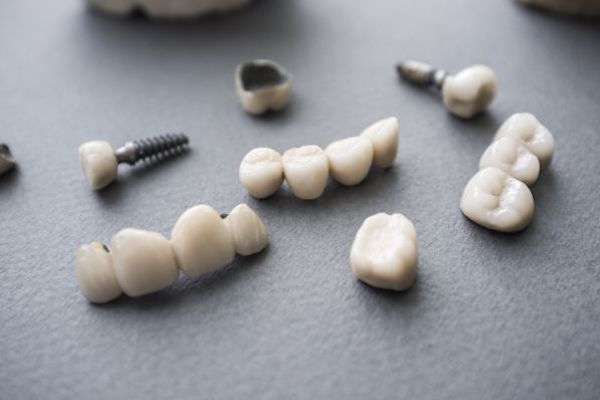 A patient may invest in dental implants for a variety of different reasons, many of which focus on positively changing personal image and improving overall oral health. Implants are often applied when patients are missing one or more teeth and are not interested (or have had no success with) dentures or dental bridges. To understand if this type of dental work is the right course of action, a patient must first know about the types of implants and the issues they address.
A patient may invest in dental implants for a variety of different reasons, many of which focus on positively changing personal image and improving overall oral health. Implants are often applied when patients are missing one or more teeth and are not interested (or have had no success with) dentures or dental bridges. To understand if this type of dental work is the right course of action, a patient must first know about the types of implants and the issues they address.
Implant options
On a basic level, a dental implant is a metal post that is screwed into the patient’s jawbone. Once secured, an artificial tooth, or crown, that matches the patient’s natural tooth color is attached to the post. The end result is a full smile and healthy, sturdy bite.
Dental implants can be broken into several categories, and a dentist may suggest one over the others because of specific patient needs. First, a dentist must determine if the patient has a strong enough jawbone for an implant. After that is decided, a patient may receive one of three different types of implants.
Endosteal versus subperiosteal
All implants can be divided into two major types: endosteal and subperiosteal. Endosteal implants are placed directly in the jawbone. These are often used with patients who have strong, healthy jawbones that are not at risk of breaking during the procedure or after the implants are placed. Endosteal placements are more common than subperiosteal.
Subperiosteal implants do not go into the jawbone but rest above it within the gums. Patients who do not have robust jawbones may undergo bone restoration techniques to regrow and fortify the bone to make it a candidate for endosteal implants. However, patients who do not wish to receive this treatment can opt for subperiosteal implants.
Single implants
Single dental implants are used if a patient is missing just one tooth. One post can be set into the jawbone where the tooth is missing, essentially replacing the lost root. The jawbone must then be given ample time to heal around the post, a period that can last several months. After it is fully healed, the crown is secured to the post via a third piece called an abutment.
Implant-supported bridges
Some patients are missing consecutive teeth in a row. In this case, dental implants can be placed in the location of the roots of the two teeth on each end of the row. The crowns attached to these implants support the crowns in between, creating an effective “bridge.” This removes the need for an implant under each artificial tooth.
Implant-retained dentures
The third option is for patients missing most teeth. Several implants are secured in the jawbone and attached to an entire denture that sits on top of the gums. Instead of having dentures that must regularly be removed, these dentures are permanently fixed in place.
Conclusion
Some dental implants work better for certain patients than others. See a dentist to get an assessment of your teeth and to discover what implant may work well for you.
Request an appointment or call McCarthy Dentistry at 740-546-5178 for an appointment in our Marietta office.
Recent Posts
A missing tooth can cause issues with your self-esteem and the functionality of your bite. Among the available restoration options, an increasingly popular choice is an implant crown. Dental implants are not an option for everyone, and they do not work in every situation. For many people, however, they are the recommended solution to a…
A dental implant is a popular restoration option among patients due to its natural feel, function, and appearance. Continue reading to learn more about dental implants. These are some questions to ask your dentist about dental implants in order to better understand how this treatment option can benefit you.No one should have to live with…
Dental implants are a reliable replacement option if a patient has a tooth extracted. There are many reasons to pull permanent teeth, including infection, irreversible damage, and a crowded mouth. A dentist may recommend an implant if a patient is experiencing difficulties with chewing or speaking, or if the person is self-conscious about smiling. It…


